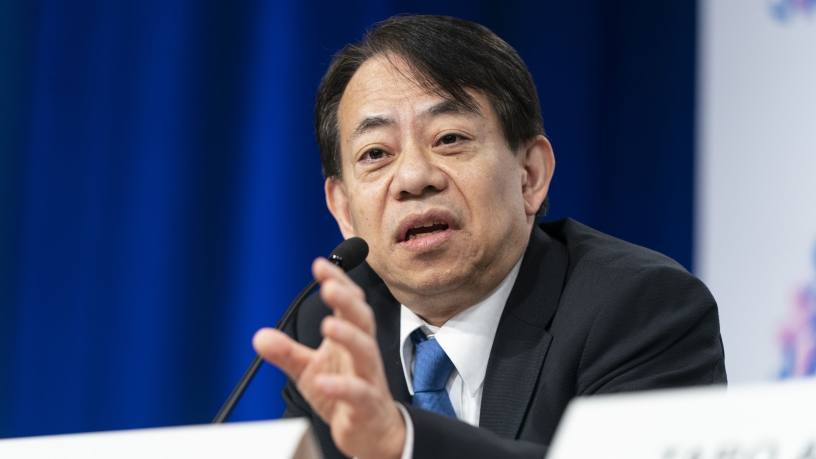Ahead of the Asian Development Bank’s annual meeting in Tbilisi, Georgia, in May, ADB president Masatsugu Asakawa shared his views with The Banker on the most immediate challenges facing the multilateral institution and the region it serves.
The interview has been edited for clarity and brevity.
Q: The ADB’s annual meeting is taking place in Georgia this year. How is the bank supporting countries in the Caucasus region and central Asia?
A: This year marks the first time we hold our annual meeting in Tbilisi, Georgia, and only the second time in the Caucasus. Given Tbilisi’s location at a crossroads between east and west, the overall meeting theme this year of “Bridge to the Future” is particularly apt. It reflects the physical, financial, and economic connections between Asia and Europe.
The meeting will include seminars and other events reflecting this theme, covering subjects such as heat stress, artificial intelligence and green globalisation.
Career history: Masatsugu Asakawa
2020: Asian Development Bank, president
2015: Japan, vice-minister for international affairs
2011: OECD, chair for committee on fiscal affairs
Our members in the central and west Asia region continue to request ADB assistance to build institutional frameworks that will help meet their climate goals, encourage private sector investment and generate sustainable economic growth.
In 2023, the ADB committed $4.3bn to our members in the region: $3.3bn for sovereign projects and more than $1bn for private sector investments. This included $1.6bn in climate finance to expand clean and renewable energy, develop greener transport networks and ensure that urban development is adapted to a warming planet. We also financed projects in agriculture, public sector management, health and education across the region. And we’ve been targeting education and entrepreneurship as drivers to reduce poverty and inequality.
As part of our efforts to reduce inequality, the ADB has invested heavily to support women in agriculture, creating products to support female entrepreneurs. For example, the bank committed $48.7mn to develop climate-smart irrigation services in Georgia’s Kakheti region, at the same time advancing women farmers’ knowledge of new agricultural technologies.
The ADB has also been investing to improve urban living standards through green development, modernised waste and municipal services, improved water supply and cleaner air. To support the build-out of green transport, the ADB invested the local currency equivalent of $8mn in a green bond to help finance 100 zero-emission light electric vehicles and expand Georgia’s vehicle charging network.
In 2023, Georgia was the chair country for our central Asia regional economic co-operation programme. We have continued to invest in economic co-operation and integration in the region. This includes strengthening transport connectivity and promoting regional action on supply chain resilience and renewable energy. For example, under the Carec programme, the ADB committed $360mn to help upgrade 330km of the national highway in Pakistan. By enhancing the climate and disaster resilience of the highway, we’re helping the country to manage the risks of road flooding and unblocking a bottleneck to regional trade.
Q: Which industries and sectors require the most support from the ADB at this time?
A: The ADB recognises the pivotal role that we must play in supporting our developing member countries, at times of increasing debt levels, strained government budgets and polycrises, when more development finance is urgently needed. There are several sectors and industries that the bank considers to be of key importance.
The ADB’s 2030 strategy acknowledges the importance of global public goods like climate. As I have noted in the past, the battle against climate change will be won or lost in Asia. Accordingly, we have significantly increased our ambition to deliver $100bn in cumulative climate finance between 2019 and 2030.
There are several climate-related priorities that the ADB is supporting in the region. Highly polluting coal-fired power is the dominant source of electricity in Asia, particularly south-east Asia. The ADB-supported Energy Transition Mechanism, launched at the 2021 UN climate conference COP26, aims to help countries accelerate the retirement or repurposing of coal and other fossil fuel power plants and transition to clean, reliable and affordable energy. With Indonesia taking strong leadership, we are poised to extend significant support to several countries, including the Philippines, Vietnam, Pakistan, Cambodia and Kazakhstan. We believe ETM has the potential to be one of the largest carbon reduction programmes in the world.
We also need to help countries decarbonise various industries. In particular, there are several “hard-to-abate” categories, such as industries producing construction materials including cement and steel. The ADB will be looking at creating a conducive policy environment for modernising such industries, besides providing investment support through public and non-sovereign modalities.
Climate change is already affecting people’s health and this will only worsen as the planet heats up. Recognising this, the ADB supported the Indian G20 presidency to launch an innovative “climate and health initiative”, to mainstream the climate health agenda and take decisive action across multiple sectors to protect human health, natural ecosystems and animal welfare.
Heat stress is a key concern. The rise in temperatures in many developing countries has highly adverse impacts on health and livelihoods. Heat stress indiscriminately affects everyone but its effects are intensified for women and girls, particularly those in heat-sensitive sectors. Recognising this escalating vulnerability at at last year's UN climate conference, COP28, we launched the gender and heat stress initiative to devise targeted, effective solutions for vulnerable segments of the population, particularly women.
Climate change, especially heat and drought, along with nature loss and economic shocks, all put enormous pressure on Asia’s vulnerable and fragile food systems. We need to expand our support to help ADB’s developing member countries to develop more sustainable and resilient food systems, and thereby address food insecurity.
Q: How can climate policy be tailored to support Asia’s emerging economies? Can the thinking around this be more innovative?
A: We recognise climate change as the great challenge of our lifetime. While climate change is a threat to future development paths in Asia and the Pacific, emerging economies in the region can be vital in shifting the global paradigm. As the climate bank for Asia and the Pacific, the ADB is supporting our developing member countries in adopting innovative ways of reducing emissions and enhancing climate resilience by partnering with key actors, including governments and the private sector.
I already mentioned the Energy Transition Mechanism. A key pillar of the ADB’s ETM is our support for a “just transition” approach, which supports the creation of green job opportunities, so that people are not left behind in the decarbonisation of energy systems.
The ADB is also spearheading the innovative finance facility for climate in Asia and the Pacific, in which donor guarantees free up additional ADB lending headroom to accelerate climate action. This is the first leveraged guarantee mechanism for climate finance to be adopted by a multilateral development bank.
Your point about tailoring our approaches to climate change touches on the need to zoom in from the big picture of economy-wide transformation to also consider how we can help the poorest and most vulnerable populations. They are suffering the most from climate change, without having contributed to it. The ADB is stepping up its work on adaptation and resilience, including through our community resilience partnership programme, for which we have so far mobilised more than $120mn in donor funds for community-level adaptation.
I want to also mention that grants are vital to support climate action in our lower-income members and we provide them through the Asian Development Fund. Grants are a bridge to the future, and through this fund are dedicated to eliminating poverty and improving the quality of life in countries in Asia and the Pacific that are most in need. Our donors are discussing a significant replenishment that we hope will be finalised at the annual meeting in May.
Q: The slowing Chinese economy and potential for Fed rate changes are two of the clouds hanging over Asia’s economies. How are these being managed? Are there any other issues causing concern?
A: We forecast China’s growth to slow to 4.8 per cent this year and 4.5 per cent next year, from 5.2 per cent in 2023, amid property sector vulnerabilities and slower expansion in services. A worse-than-expected deterioration in the Chinese property market could dampen domestic consumption and investment, with negative knock-on effects on global trade flows and export-oriented economies.
Our research suggests that, assuming a further moderate policy response, an additional property-market correction in China would have limited effects on other developing Asian economies and the rest of the world. This is because real estate investment in China primarily relies on domestic inputs. However, a few trading partners tightly linked to China, mainly via mining commodity exports, would experience larger effects.
Despite China’s slowdown, we expect solid growth in the rest of developing Asia this year. Domestic demand will remain strong throughout the region, while external demand should continue to recover, driven by an upturn in the global cycle for semiconductors.
On Federal Reserve policy, although some easing can be expected during 2024, the trajectory of US interest rates remains uncertain. Central banks in Asia are managing this uncertainty, as well as continued price pressures, by taking a cautious approach. While hiking cycles in the region are largely over, monetary stances remain tight and real interest rates elevated.
Our analysis suggests that higher-for-longer interest rates in the US would affect Asia. If Fed rates were left unchanged for the rest of 2024, Asian currencies would depreciate relative to the US dollar. This would result in some imported inflation.
Other risks facing the region include an escalation in conflict and geopolitical tensions, which could disrupt global supply chains and amplify commodity price volatility. Extreme weather events could also affect the outlook, particularly in low-income economies, where agriculture usually accounts for a significant share of the economy and food insecurity is more acute.
Fostering resilience to external shocks is essential, including through enhancing trade, cross-border investment and commodity supply networks. Prudent fiscal management will also be important, given constrained fiscal space and elevated interest rates.










